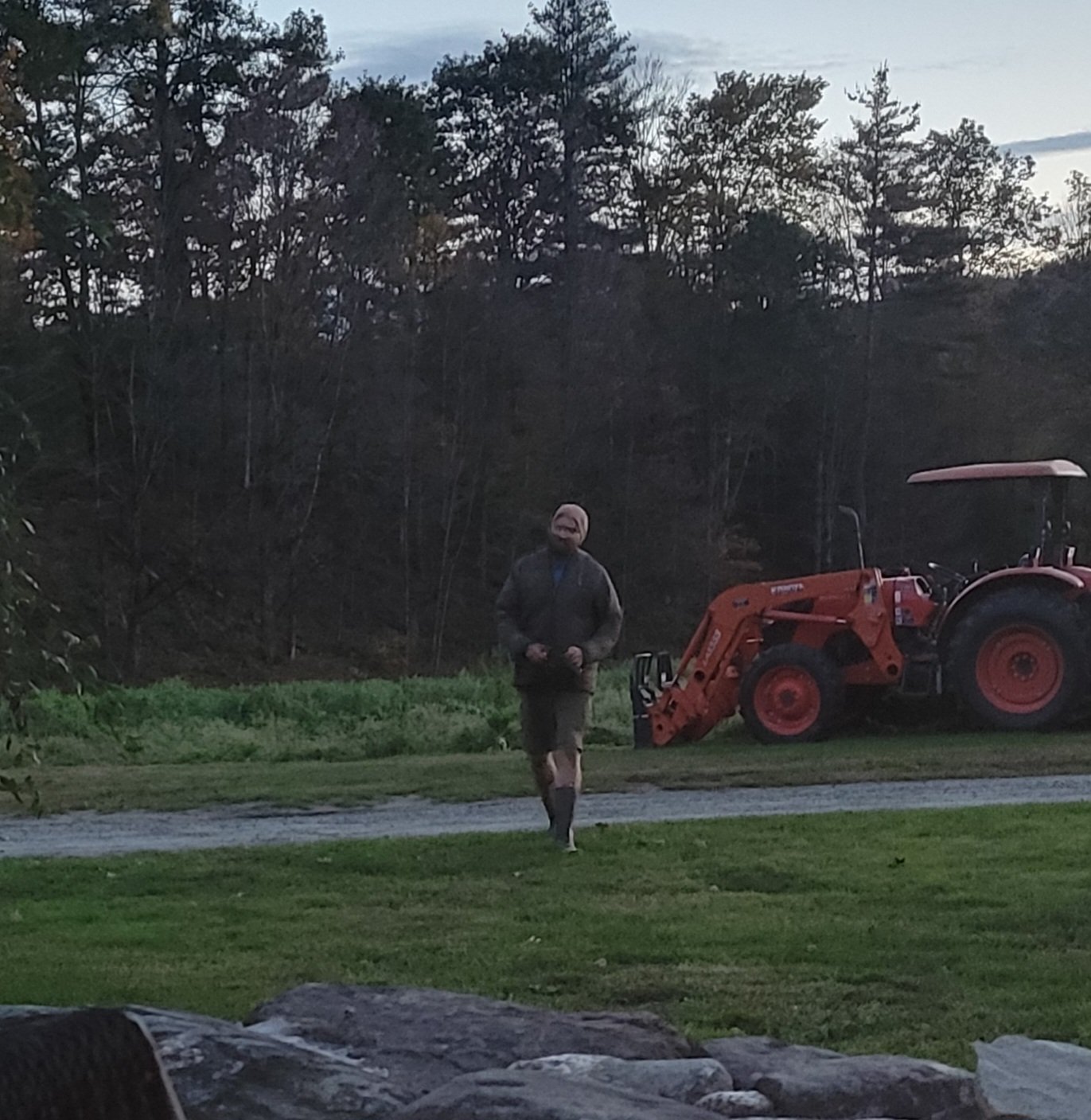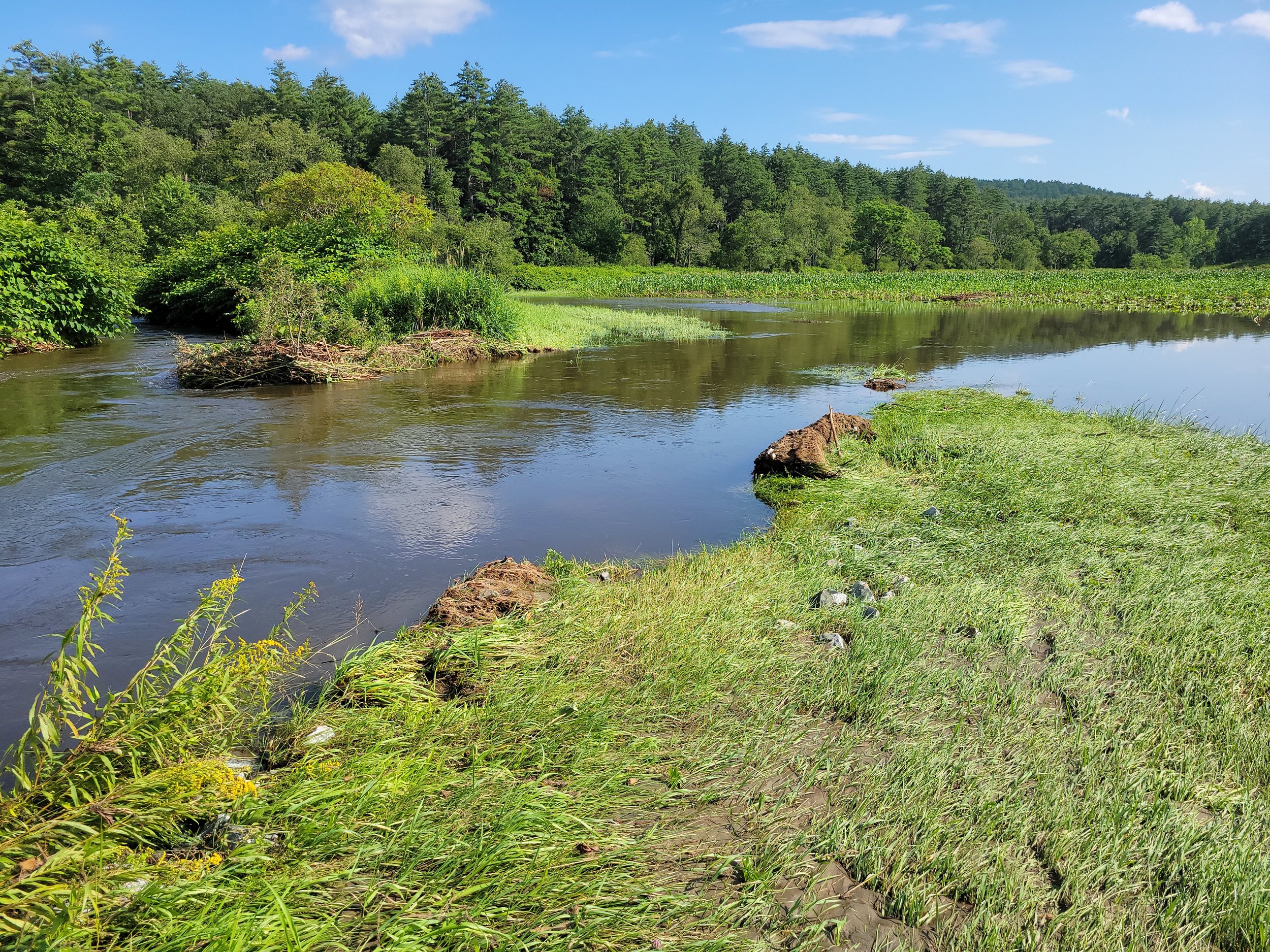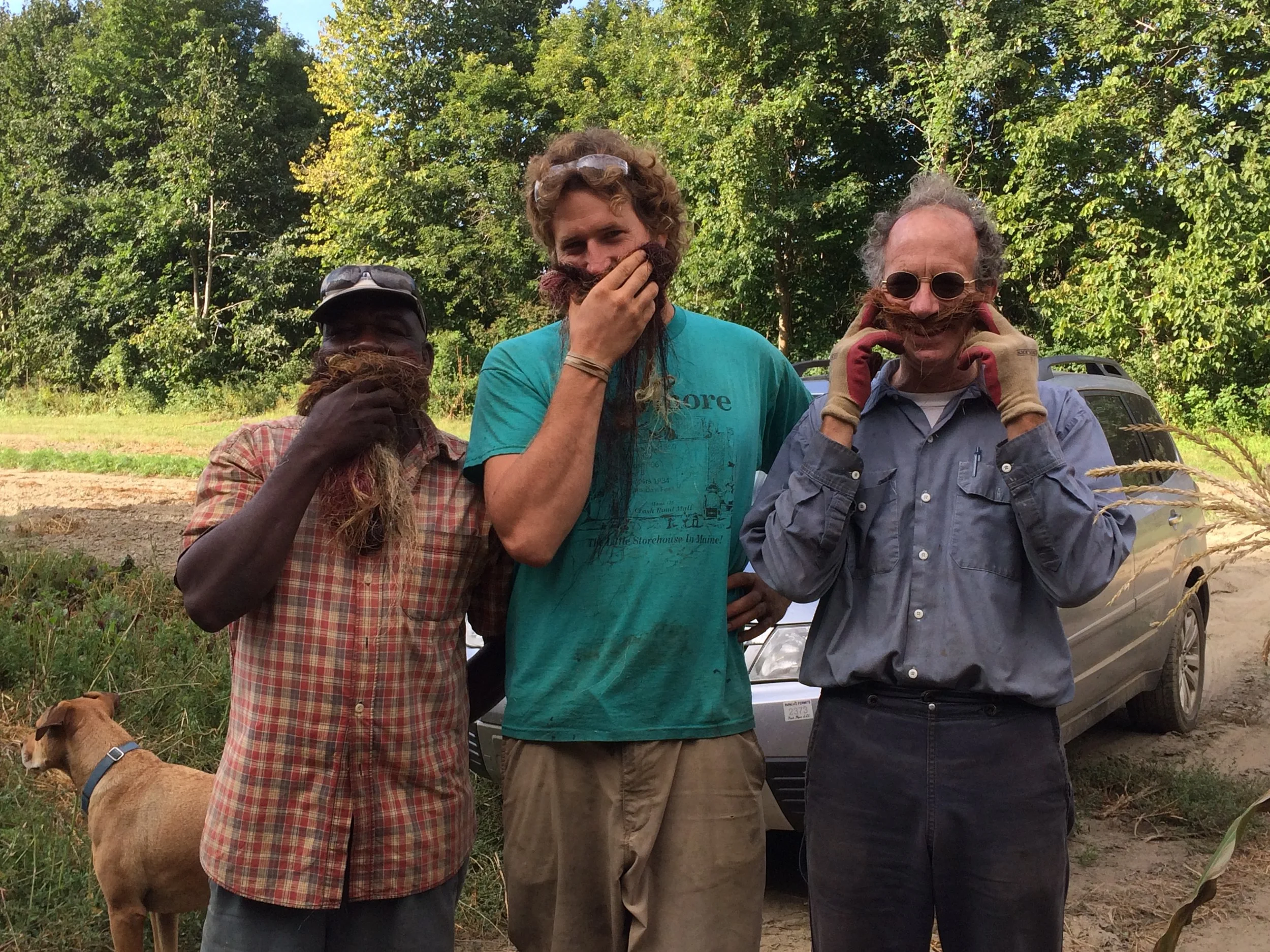The turkey soup has been made and the last vestige of pumpkin pie has been hoovered up. The ground this morning is covered with snow with the promise of more tomorrow and some very wintery cold weather later in the week. Time to thank our friends and customers with a holiday thank you note from the Edgewater Farm Family.
For us here at Edgewater and our farming colleagues it was a challenging year. There was extreme wet and cold that hampered spring planting and by mid June had morphed into the worst drought to plague the upper valley in the last half century. For some it was disastrous with crop loss resulting in serious financial repercussions. While ample ground moisture from the spring rain was available to plants early in the heat of the drought, by mid august things were dire for folks on drier ground and inadequate irrigation. Brooks that used to run all year long dried up. For about a month and a half the Connecticut river was so low that you could wade to Vermont through it almost anywhere along River Road in Plainfield.
Earlier in the summer I wrote a blog in which I regarded how blind luck determines our yearly outcomes in agriculture. I am happy to report we were a lot luckier than I thought we would be. Greenhouse bedding plants sold well, but we then experienced the worst strawberry crop that we ever have had. Plant production was quite light and the fruit had no size. We struggled maintaining strawberries for the farmstand and our wholesale accounts and were only able to open the PYO for three mornings. That didn’t look very good on paper.
But the heat that followed in July brought fast healthy growth to the vegetable crops as they finally took off. Some did not recover, but with a couple of very lucky and timely showers many did recover and the fall crops actually did pretty well. At least the ones the deer didn’t ravish...
So weather is still our biggest challenge. Animal intervention into crops, insect and disease control remain manageable. Other than that, farming is just a walk in the park for upper valley growers (not).
I feel the biggest story this year is our farm community labor force and the supportive community that we live within. From the folks who come to work at Edgewater, this has been the best collection of folks in many, many years. Tony White who headed up the produce sales at the local coop asked me in a meeting years ago if we had a good year. I responded quickly that indeed we had, as the crew performed admirably, worked together like a finely tuned Swiss Watch without an ounce of drama. When that happens, it’s the benchmark of a very good summer. Good humor and attitude go a long way, and if you turn a profit ....all the better.
This crew this summer exceeded all expectation. The difference of cultures, ages, and languages could have been an insurmountable challenge. An acquaintance of mine saw a crew photo said it looked like we were hosting the United Nations representatives. But with an understanding that everyone had to pitch in on a shared journey (and the help of Google translate) we were able to make sure the cherry tomatoes got harvested and the ever present weeds got challenged. Everybody picked up a little Spanish and Patois this year, at times it was comical, with gestures, arm waving and laughing.
But in reality it was magical. There were a lot of long faces on those of us that remained after the crew departed for their winter homes.
And then there was our supporting local and retail community who not only sustained us by purchasing what we offered up, but offered words of encouragement when they could see the challenges happening. In October there was a hurricane that devastated Jamaica. Homes and towns of our field crew suffered significant damage but fortunately no family members were injured. They all chose to stay and finish their contract, in no small part because they would need all the money they could earn to initiate house repairs. Jenny jumped on the bandwagon with a fund for them to assist in repairs and with that we were able to send them home each with about $1200 additional money and still some trickles in. I have a close friend who is a self employed blue collar worker (still working) in his late 60s. His truck struggles to pass inspection and he doesn’t eat out much. His family made a very generous donation and when I sought him out to personally thank him he just gave me a twisted grin and said “Pal, we got the world on a string..” I truly get it, as should we all.
So now that the growing season is in the rear view mirror, that is the way we see it. Greenhouse Meeting next week, the holidays, tax planning, water useage and pesticide useage annual reports, taxes, seed orders, maintain the prop greenhouse and bring the stock plants along, pack out carrots and potatoes, maybe drag the harrows out of the snowbank and fix them.. Although I am not as excited about the early arrival of snow and cold temps as I might have been as a 40 year old skier, I am grateful for a good year with much good will from our customers, neighbors and employees. And a significant woodpile in the garage.
Happy Holidays from the farm





















